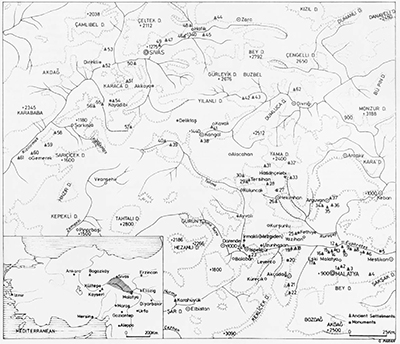
The Institute of Archaeology of Tel Aviv University has in recent years promoted the active participation and collaboration of some of its members in the field of Anatolian Archaeology and Cultures in various field projects in Turkey, Between 1972 and 1975 Dr. Jak Yakar, a member of the Institute of Archaeology, took part in the archaeological surveys in the Samsun region and in the excavations at Ikistepe, Bafra conducted by the Samsun Expedition (see Expedition 18, 2 [19761, pp. 43-47). In the summer of 1977, the Institute extended technical and financial assistance to the Malatya-Sivas-Gemerek project undertaken by Dr. Jak Yakar and Mrs. Ayşe Gürsan-Salzmann (of the University of Pennsylvania). The following article summarizes the objectives and some of the results of this recent field survey in Anatolia.
The survey was carried out within the triangle of Gemerek-Sivas-Malatya during August 4-25, 1977, with a permit granted by the Directorate of Antiquities of the Turkish Ministry of Culture. It covered the following geographical regions: (see Map 1)
- The Malatya plain and the Tohma Su basin (this territory probably included the Hittite Tegarama and part of the land of Armatana)
- The Gemarek-Sarkisla plain
- The upland plain of Uzunyayla and the Tecer mountain chain (this region may have included the Hittite province of “Upper Land”)
- The districts of Hekimhan and Darende
- Upper Kizilirmak valley (between Gemerek and Sivas)
- The Tohma Su valley.
The purpose of the survey was to gather additional data to clarify
a) The distribution of local pottery cultures of Malatya and Sivas provinces;
b) The extent of North Syrian and North Mesopotamian cultural influences north of Malatya during proto-historical periods;
c) The type of settlements and their distribution patterns;
d) The historical geography of the region during the 2nd millennium B.C.;
e) The availability of natural resources and evidence of the early exploitation of metal sources in the same region. (Lack of time and qualified personnel did not allow us to carry out these investigations.)
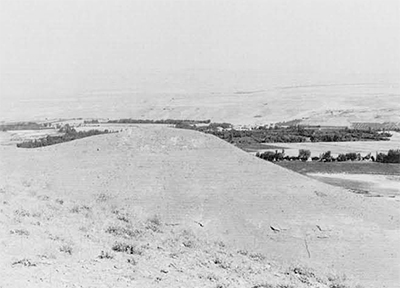
Our preliminary observations indicate that in the Malatya and Sivas provinces all of the surveyed sites (28) were occupied in the 3rd millennium and three-fourths of the total in the 2nd millennium; but there are fewer sites with continuous occupation from the 3rd to the 2nd millennium. Many of the hoyuks were on natural hills, and smaller settlements were founded on hill slopes, which sometimes escaped our observation.
During EB I-II, the Malatya plain, the Tohma Su Valley, and the Keban region present a homogeneous pottery assemblage known as East Anatolian dark burnished wares.
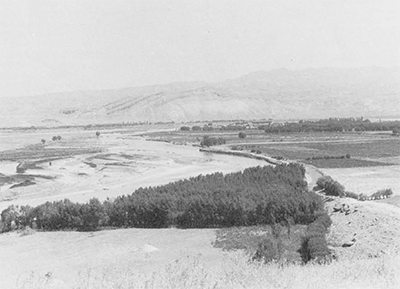
Connections with Northern Syria and Mesopotamia were established during this period, as is evidenced by the presence of Uruk-type beveled-rim bowls. At Arslantepe (Malatya), wheelmade, light ware bowls with string-cut bases were frequently found in an EB I context; also, the reserve-slip technique, a North Mesopotamian element, is associated with cream wares. The Gemerek-Sivas area was conspiculously lacking in North Mesopotamian cultural connections during the 3rd millennium; rather, connections were established with Central Anatolia.
In the EB III period there is some contact between Malatya and Central Anatolian regions as far as Amasya and, even further north, the Pontus region. The fine, red-slipped, burnished bowls with black interiors known in north-central Anatolia may have reached the Malatya plain as a result of trade, but this is not certain. The wide distribution of the Malatya painted pottery through the Tohma Su valley in the north as far as Kangal, and Keban to the east, may reflect the spreading of this tradition fairly rapidly from one or several centers to areas where it was locally produced. The Tohma Su valley, where a large corpus of variants in ware and decorative motifs is found, may be suggested as one center of production. In the Sivas province, especially between Sivas and Gemerek, painted bichrome wares have close affinities with the Central Anatolian tradition of EB II-III, though we observed few pieces which resembled Malatya painted wares.
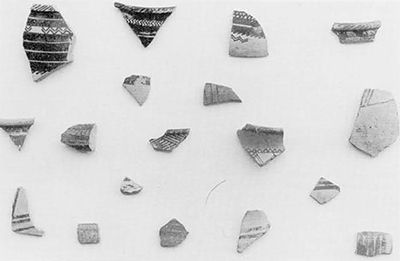
In the 2nd millennium the Gemerek-Sivas region was densely populated. This settlement pattern may have continued east of Hafik. The Central Anatolian cream-slipped/ burnished wares of the 2nd millennium are widely distributed along Kizilirmak (Gemerek-Direkli) and the upper Tohma Su valley (Kangal and Tersihan). In particular, the trefoil-mouth jugs found at sites near Sivas are related to the Kültepe Karum II-Ib types. Similarly, in the Malatya plain and as far north as Hekimhan, we were able to trace the distribution of this ware which has parallels in Buyukkale level IVc-d and can be dated to about 1800-1700 B.C.
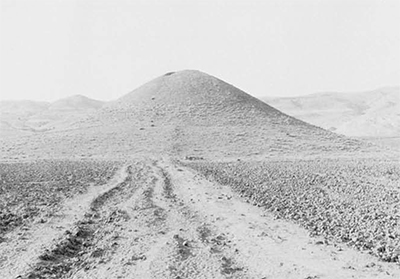
However, Central Anatolian type pottery is very sparsely distributed in the Malatya plain; only further excavations may clarify the question whether there is a historical explanation for the fact that Central Anatolian cultural influence in the LB period was felt more strongly in the Keban than has so far been discovered in Malatya.
It is further suggested that in the 2nd millennium connections between Malatya province and Central Anatolia could have been established by means of routes passing through Gurun and Darende. However, we cannot clearly substantiate the actual use of these routes during the 2nd millennium until further evidence is obtained.
As for the possible locations of such important 2nd millennium settlements as Pittiyariga, Marassanta, Samuha, Arziya in the eastern regions, the Sivas-Gemerek-Malatya triangle seems a likely area to search because of the presence of some mounds in the upper Kizilirmak valley or in the Tohma Su and upper Euphrates valleys.
